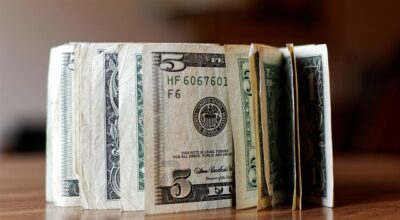Chesapeake Bay cleanup impacts agriculture
Published 12:22 pm Thursday, June 27, 2019
You may have heard about the Chesapeake Bay watershed, but what is it? A watershed is “an area of land that drains all the streams and rainfall to a common outlet such as the outflow of a reservoir, mouth of a bay, or any point along a stream channel.” (U.S. Geological Survey) The Chesapeake Bay watershed is made up of the land and streams in parts of New York, Pennsylvania, Delaware, Maryland, Virginia, West Virginia and Washington, D.C. The pollution from those 64,000 square miles washes into streams, which eventually discharge into the Chesapeake Bay. The Bay’s health has been negatively affected by this pollution, but communities throughout the Bay watershed, along with federal and state government, local government, nonprofit organizations, citizens, farmers and private businesses, are making significant progress restoring the health of local waterways and the Bay.
On Dec. 29, 2010, the U.S. Environmental Protection Agency (EPA) established the Chesapeake Bay Total Maximum Daily Load (TMDL), a historic and comprehensive cleanup plan that guides federal, state and local actions to clean up the Chesapeake Bay and the connected streams. The objective is to have clean-up practices, known as best management practices (BMPs), in place by 2025 to reach the goal of a clean Chesapeake Bay and local waterways that meet water quality standards. According to the EPA, “A TMDL is the calculation of the maximum amount of a pollutant allowed to enter a waterbody so that the waterbody will meet and continue to meet water quality standards for that particular pollutant. A TMDL determines a pollutant reduction target and allocates load reductions necessary to the source(s) of the pollutant.” Specifically, in Virginia, the TMDL calls for a 20.5 percent reduction in nitrogen, 25.2 percent reduction in phosphorus, and 20.8 percent reduction in sediment delivered to the Bay. Virginia’s Phase III WIP impacts all sectors of land use and includes both incentives and possible regulatory actions needed to meet the goals.
Watershed Implementation Plans (WIPs) are the roadmap for how Bay states and the District of Columbia, in partnership with federal and local governments, will attain the Chesapeake Bay TMDL. Bay states have worked with local stakeholders to develop the third phase of their WIPs, which are being reviewed by the EPA. The Phase III WIPs will include an update of state and federal strategies and the identification of new pollutant reduction strategies with a special focus on sustained local engagement and strategies.
An immediate impact to Soil and Water Conservation Districts (SWCDs) and their agricultural producers is a significant increase in cost-share funds (financial assistance for installing Best Management Practices, or BMPs) for the upcoming program year, starting July 1. There will also be significant changes and additions to the BMPs available. SWCDs work with local agricultural communities to determine the BMPs that are needed to achieve water clean- up goals while also meeting the needs of farmers. SWCDs provide critical technical assistance and financial assistance for farmers implementing agricultural BMPs that improve water quality. Pollutant reductions from agricultural lands are critical to the health of the Chesapeake Bay and meeting Phase III WIP goals.
Piedmont SWCD has a long and successful history of working with farmers in Amelia, Nottoway, and Prince Edward counties to achieve water quality goals. A segment of Deep Creek in Amelia has been removed from the impaired waters list as a result of this partnership. Sign-up for financial assistance for the upcoming program year begins July 1, and meetings will be held in August (dates forthcoming) to inform agricultural producers about the expanded financial assistance opportunities. For more information about financial assistance and BMPs, contact Charlie Wootton at (434) 392-3782 ext. 128 or Kevin Dunn at (434) 392-3782 ext. 116.
Emily Gibbs is the residential conservation and marketing coordinator at Piedmont Soil & Water Conservation. You can contact her at (434) 392-3782 ext. 131 or visit www.piedmontswcd.org.



